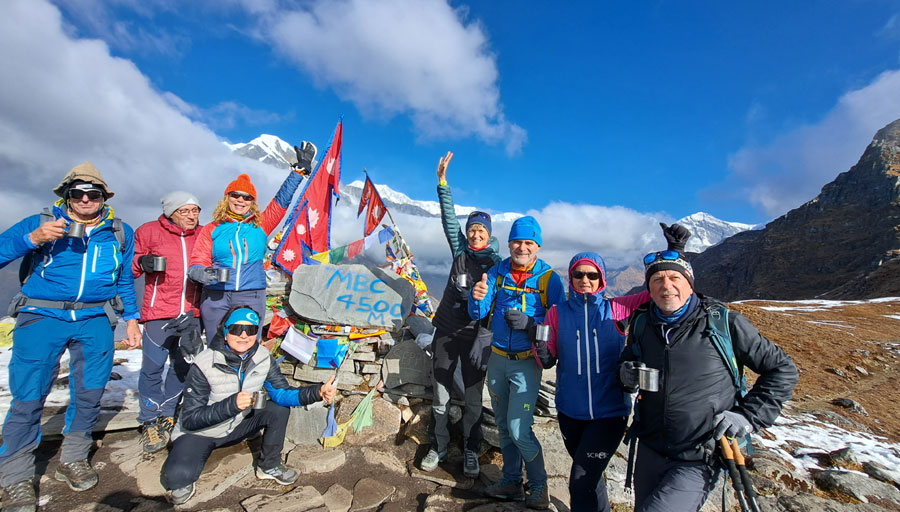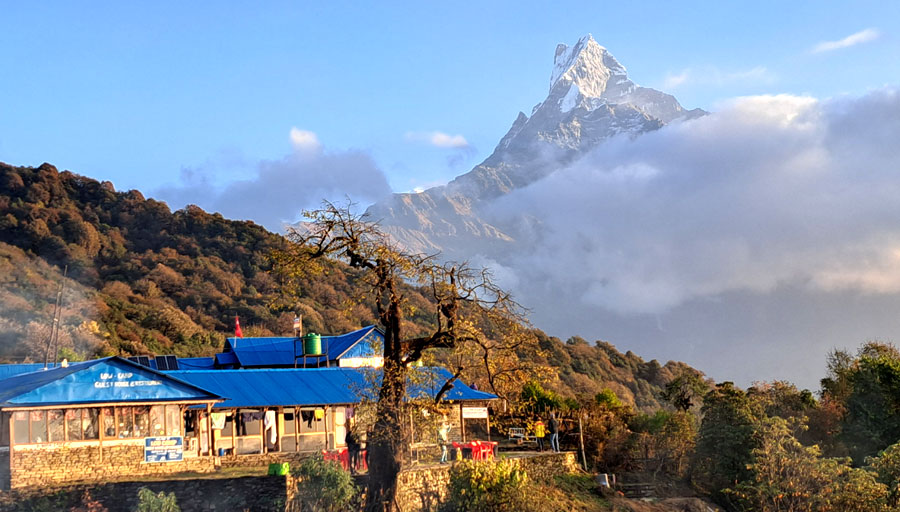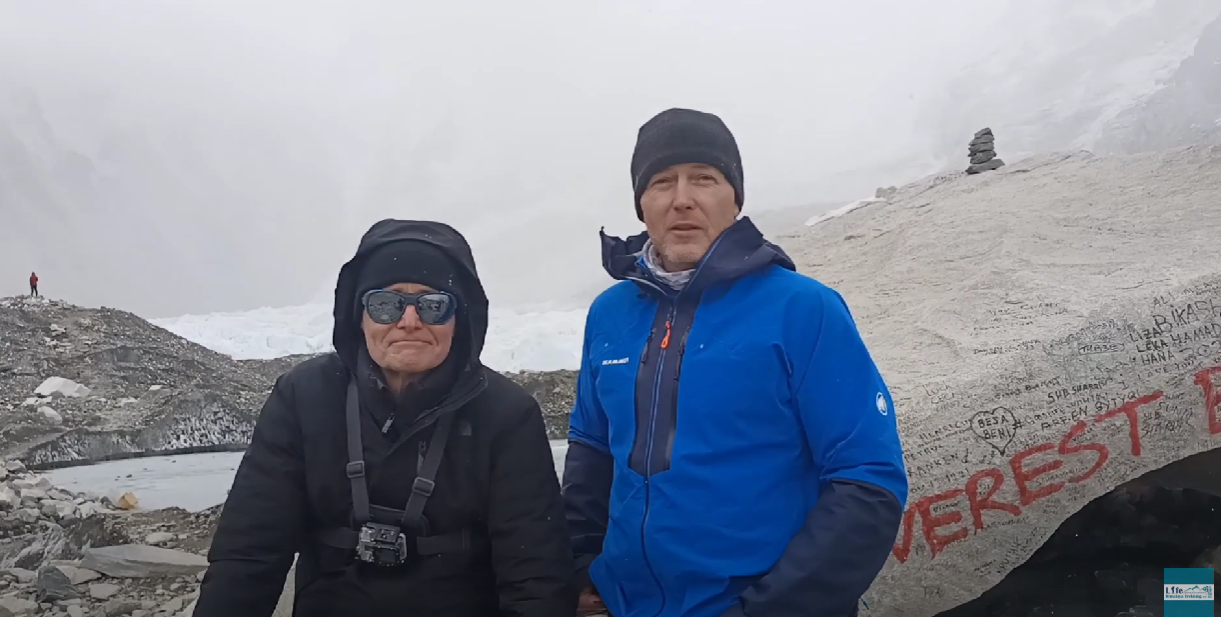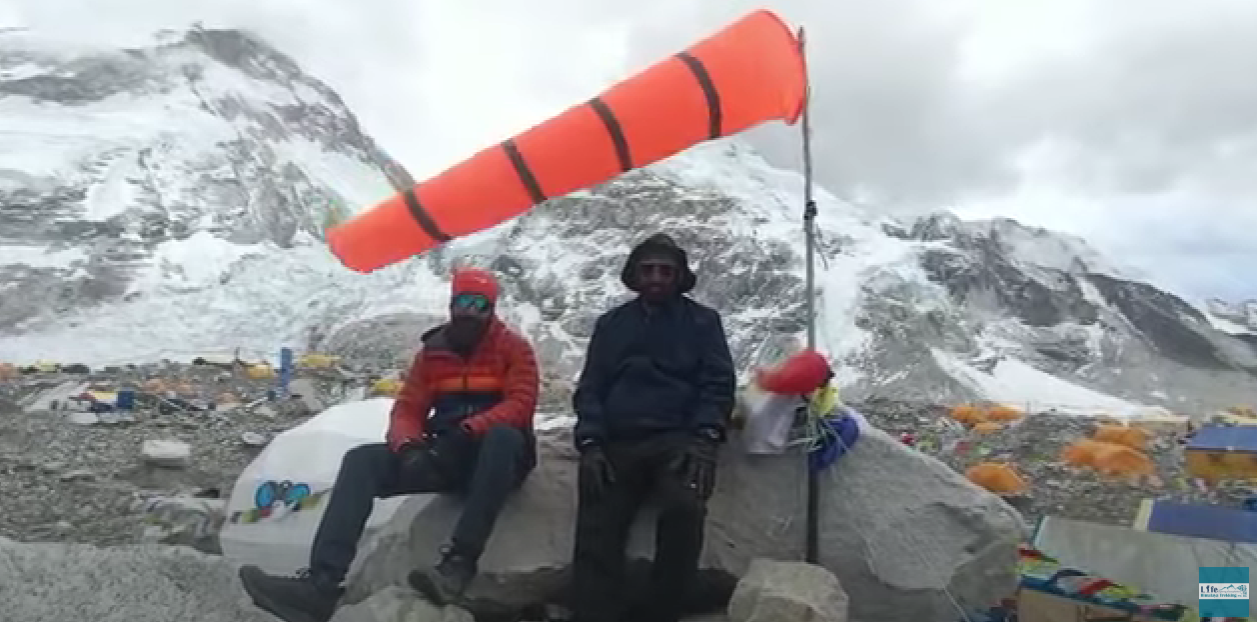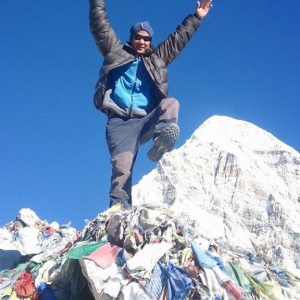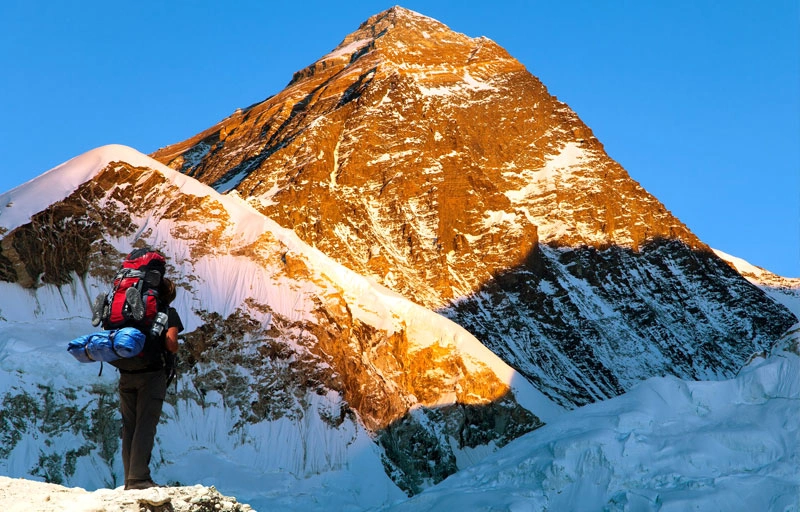Max. Altitude
4,500 m
Best Season
Mar-May & Oct- Dec
Activity
Trekking
Start / End Point
Pokhara/Pokhara
Overview of Mardi Himal Trekking from Pokhara
The Mardi Himal Trekking, from Pokhara, is one of the most captivating short treks in the Annapurna region. Though relatively new—formally opened in 2012—it has quickly become a favorite among trekkers seeking both natural beauty and cultural immersion. This trek offers a thrilling adventure to the base camp of Mardi Himal, revealing the hidden gems of the Annapurna range in just a few days.
What makes the Mardi Himal Trek so special is the stunning panoramic views it offers throughout the journey. Towering Himalayan peaks such as Mount Dhaulagiri, Annapurna, Machhapuchhre (Fishtail), Manaslu, and Himchuli dominate the skyline, while the rolling green hills and terraced farmlands provide a beautiful contrast. As the trail winds through quiet forests, remote villages, and alpine landscapes, the trek delivers a diverse experience in a compact itinerary.
Despite being in the shadow of more famous treks like Annapurna Base Camp and Ghorepani Poon Hill, Mardi Himal stands out for its serenity. It is less crowded, making it ideal for those who prefer a more peaceful trekking experience. The trail is moderately difficult, suitable for both novice and experienced trekkers, and doesn't require any technical climbing. Being so close to Pokhara, it’s also very accessible.
As we began the trek toward High Camp, we passed through pristine forests filled with oak and rhododendron trees, especially vibrant during the spring blooming season. The path meanders through terraced farms and picturesque traditional villages inhabited by Gurung and Magar communities. These villages are not just stopovers—they are cultural encounters. Staying in local teahouses allows trekkers to engage with the daily lives, customs, and traditions of the indigenous people of the region.
The Mardi Himal Trek is more than just a mountain hike—it’s an immersive cultural journey. Along the way, the warm hospitality of the Gurung and Magar people leaves a lasting impression. Their centuries-old traditions, colorful clothing, and welcoming nature enrich the overall trekking experience. Enjoying a hot cup of tea while listening to local stories by the fireplace adds a unique flavor that goes beyond just the physical journey.
At High Camp, situated at around 3,580 meters, the dramatic close-up views of Machhapuchhre and the surrounding Annapurna peaks are absolutely breathtaking. From here, a short hike to Mardi Himal Base Camp offers even more stunning vistas and a sense of accomplishment as you stand before the towering mountains that define Nepal’s landscape.
In conclusion, the Mardi Himal Trek is a perfect package for those looking to explore the Himalayas within a limited time frame. It delivers majestic mountain views, vibrant forest trails, and authentic cultural encounters. Whether you're a first-time trekker or a seasoned adventurer, this route offers a real taste of the natural and cultural treasures Nepal has to offer.
Mardi Himal Trekking from Pokhara Itinerary
01
Drive Pothana Trek to Forest Camp
On our first day, we will leave Pokhara in the early morning and drive towards Kande, which is considered the starting point of our Mardi Himal trekking route. Upon reaching Kande, we will trek for about (4-5) hours towards Pitan Deurali (1925m). We will stay overnight there at the lodge.
Maximum Altitude
1,925 m.
Meals
Breakfast, Lunch and Dinner
Trek Duration
5 hours Trek
Accomodations
Lodge
02
Forest Camp to Low camp
Pitan Deurali will be the starting point for today’s journey to the low camp, where, after a four-hour hike, there will be a lunch stop at Forest Camp (2600m). Then, after a 2 to 3-hour hike, we will arrive at a low camp, where we will spend the night.
Maximum Altitude
2,970 m.
Meals
Breakfast, Lunch and Dinner
Trek Duration
5 hours Trek
Accomodations
Tea House
03
Low Camp to high Camp
 On this day, we will go from low camp to high camp (3550m), giving you a breathtaking vista of Machhapuchhre on the front and Himchuli and Annapurna to the left. The journey to the high camp will take roughly 4 hours in total. Overnight at the lodge.
On this day, we will go from low camp to high camp (3550m), giving you a breathtaking vista of Machhapuchhre on the front and Himchuli and Annapurna to the left. The journey to the high camp will take roughly 4 hours in total. Overnight at the lodge.
Maximum Altitude
3,580 m.
Meals
Breakfast, Lunch and Dinner
Trek Duration
5 hours Trek
Accomodations
Lodge
04
High Camp to Mardi Himal Base Camp Return to low camp
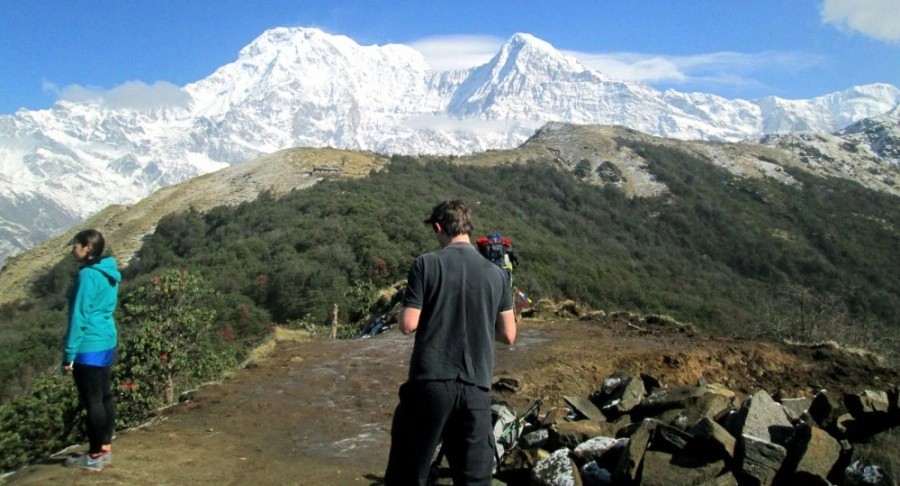 Eventually on this day you will wake early for the sunrise view and hike towards Mardi Himal base camp (4550m). After hiking for 3 hours we will reach the base camp where you will be able to see the extensive view of Annapurna (south face) as well as other massive peaks including Himchuli and Machhapuchhre. After that, we will ascend down to high camp for the lunch. Then retrace to the low camp for the night.
Eventually on this day you will wake early for the sunrise view and hike towards Mardi Himal base camp (4550m). After hiking for 3 hours we will reach the base camp where you will be able to see the extensive view of Annapurna (south face) as well as other massive peaks including Himchuli and Machhapuchhre. After that, we will ascend down to high camp for the lunch. Then retrace to the low camp for the night.
Maximum Altitude
4,500 m.
Meals
Breakfast, Lunch and Dinner
Trek Duration
7 hours Trek
Transportation
lodge
05
Low camp to Lwang village
 On the way back we take a route from low camp that goes down to siding. From there you will trek from siding to Lwang via Ghalel which will take about 5 to 6 hours. When you reach Lwang village, the villagers will warmly welcome you with their unique traditional and cultural approach and afterward, a cultural show and performance will be held. Ultimately, you’ll spend your night there.
On the way back we take a route from low camp that goes down to siding. From there you will trek from siding to Lwang via Ghalel which will take about 5 to 6 hours. When you reach Lwang village, the villagers will warmly welcome you with their unique traditional and cultural approach and afterward, a cultural show and performance will be held. Ultimately, you’ll spend your night there.
Maximum Altitude
1,4600 m.
Meals
Breakfast, Lunch and Dinner
Trek Duration
6 hours Trek
Accomodations
Homestay
06
Lwang village to Hemja Drive to Pokhara
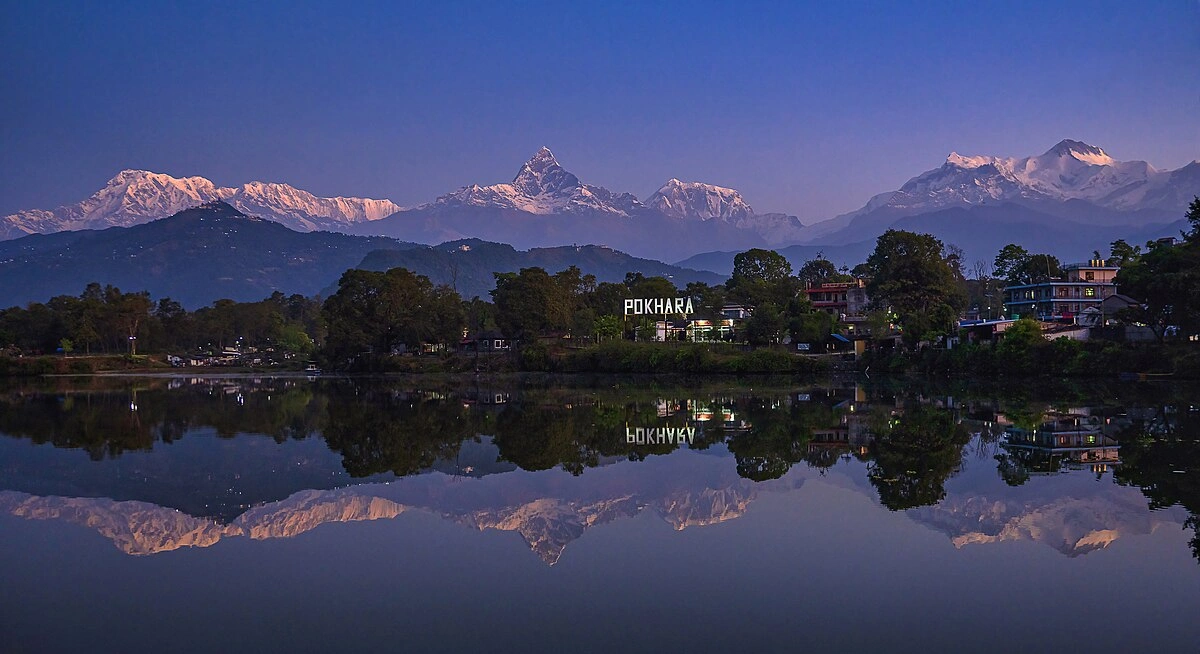 The villagers will bid you farewell after placing flowers and tika on this last day. You will then travel via Hemja to reach Pokhara. There you can enjoy the beautiful scenery of the mountains and lakes in the valley.
The villagers will bid you farewell after placing flowers and tika on this last day. You will then travel via Hemja to reach Pokhara. There you can enjoy the beautiful scenery of the mountains and lakes in the valley.
Maximum Altitude
830 m.
Meals
Breakfast, Lunch and Dinner
Trek Duration
5 hours Trek
Accomodations
Hotel
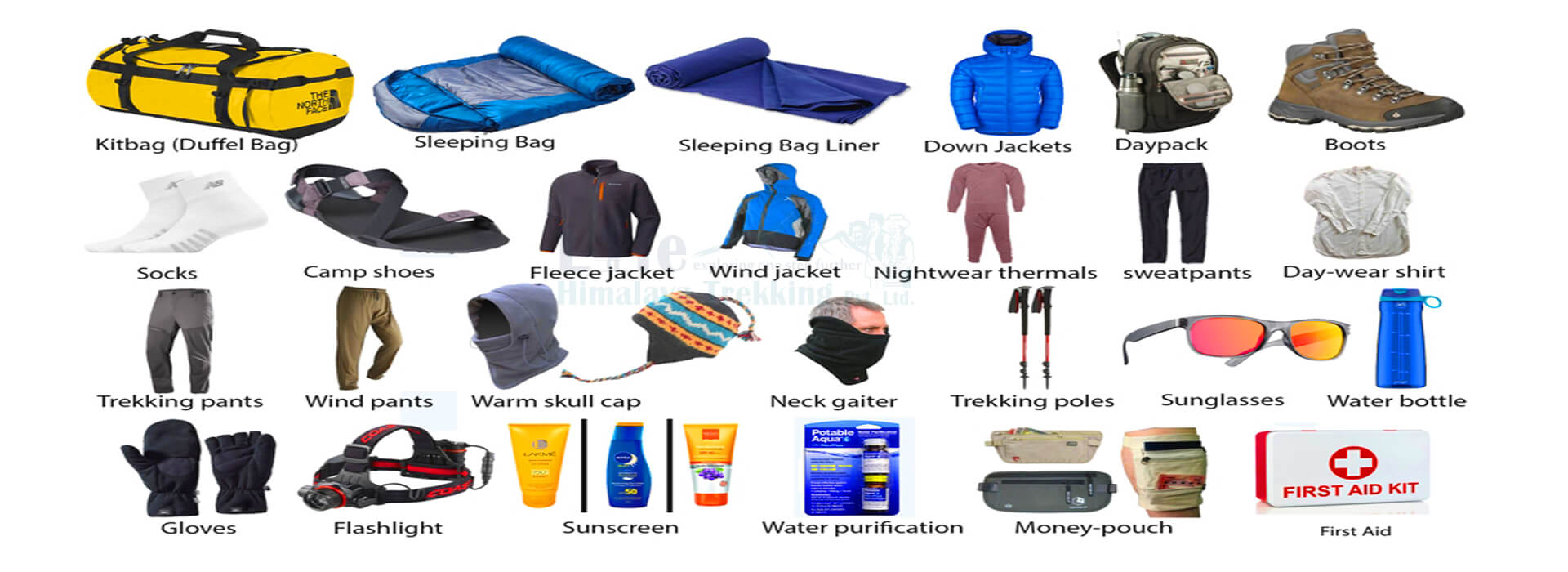

Required Equipments for Trekking in Nepal
- Breathable Underwear
- Sports Bra
- Base Layers
- Trekking Shirts
- Trekking Trousers and Shorts
- Fleece Jacket
- Down jacket (insulated jacket)
- Windcheater (water proof)
- Sun protection Hat
- Headband or Beanie
- Scarf or neckband
- Gloves (inner and outer )
- Hiking Boots
- Trekking Shoes
- Hiking Socks
- Thermal Socks
- Gaiters
- Duffel Bag
- Day pack
- Sleeping Bag
- Trekking poles
- Sunglasses
- Hydration bladder or Water bottle
- Head Lamps
- Batteries
- Personal towel
- Swiss army knife
- Sun lotion
- Medical & first-aid kit
- Woolen socks
- Waterproof jacket
- Lip Guard
- Insulated pants
- Baby wipers
Required Equipments for Climbing in Nepal
- Water bottle
- Batteries and bulbs
- Flashlight
- Personal towel
- Swiss army knife
- Rucksack
- Sun lotion
- Medical & first-aid kit
- Sewing kit
- Polypropylene/wool socks
- Other required equipment
- Sleeping bag
- Down Jacket
- Waterproof jacket
- Trekking shoes/boots
- Camp shoes
- Jumperorpile jacket
- Hiking pants
- Hiking shirts
- Full–sleeves shirt
- T-shirts
- Sun hat
- Gloves
- Woolen hat
- Long underwear
- Goggles or sun glasses
- Gaiters
- Sun block for lips
- Light cotton socks
- Mountain trekking boots
- Woolen socks to wear with boots
- Nylon wind breaker
- Insulated pants
- Nylon wind pants
- Long sleeved cotton/woolen shirts
- Sun hat
- Long cotton hiking shorts
- Fleece/wool for climbing
- Lightweight fleece
- Sleeping pad (karri mat) or thermarest
- Down high altitude sleeping bag
- Down jacket/trousers/vest
- Light cotton athletic socks and wool socks
- Water proof climbing jacket
- Head torch/batteries/bulbs
- Climbing sunglasses
- Lightweight thermal/insulated ski gloves
- Sun screen
- Warm climbing trousers
- Wool long underwear
- Other required equipment
- Climbing boots
- Gaiters
- Ice axe
- Harness
- Crampons
- Karabiners
- Tapes/slings
- Snow bars
- Ice screws
- Rock pegs
- Deadmen
- Crash hat
- Day bag
- Rucksack
- Lip salve
- T-shirts
- Ascenders
- Ascenders
- Kit bag
Whats Included
- Arrangements for arrival and departure.
- Accommodations in twin-sharing rooms in Pokhara and Kathmandu as per the program.
- Accommodation in local tea house during trekking.
- Breakfast is served each morning in Pokhara and Kathmandu.
- All meals, including breakfast, lunch, and dinner while hiking.
- One extremely knowledgeable, helpful, and pleasant guide, porters (one porter per two guests), and all of their related expenses. Including meals, lodging, pay, tools, and staff accident insurance.
- First aid kit and water purified tabs.
- Mardi Himal Map.
- Everything that follows the prescribed itinerary.
- Trekking permit and TIMS card.
- Government taxes and official service.
- Tourist bus from Pokhara to Kathmandu.
- Private transportation to and from the trailhead.
- Private transportation from Kathmandu to Pokhara.
Whats Excluded
- Meals not quantified in the ‘Meal Inclusions’ in the itinerary’
- Travel insurance
- International airfare
- Nepal entry visa charge.
- All beverage and other personal expenses.
- Snacks and other personal expenses
- Hot shower during the trek.
- Tipping
- Any additional costs brought on by a change in the weather or by accidents or other natural disasters.
Additional Information About Mardi Himal Trekking from Pokhara
Weather and Temperature in Mardi Himal
The Mardi Himal Trek has Favourable Conditions for weather and temperature throughout the year. However, to be successful in trekking you should collect information on the climatic conditions and should consider this as an important factor. Although this mountain is not very tall, the route climbs from a starting elevation of 1500 meters to 3500 meters (High base camp) before arriving at the Mardi Himal base camp (4500m).
This region has a moderate temperature throughout the year. The maximum temperature in this region rises to 15 °C, and the minimum temperature falls up to -3 °C. In each season of the year, the temperature changes. Here are the details on Mardi Himal base camp temperature in all of the 4 seasons throughout the year:
Mardi Himal Weather in the Spring Season
This is the best time for trekking in Mardi Himal. Especially the months between March and May are the most preferable ones. The wonderful view of the flora and fauna and the forests attracts most of the trekkers for this trek in this season. The main soothing attraction in this season is the clear sky which provides the most scenic view of the mountains and the forest located at far distances.
You can also witness the blooming flowers on the pathways covered with the rhododendron and oak trees. However, in this season, the day temperature may reach up to 20 °C, and at night, the temperature may fall up to 3 °C. If you want to avoid the crowd and have a wonderful time trekking in a peaceful environment, then we highly recommend you visit Mardi Himal in the spring season.
Mardi Himal Weather in the Monsoon Season
In Nepal, the monsoon season begins in June and lasts until August. Since the country’s western section is regarded to be its dampest, this lovely peak is located there. You may get bright skies and the ideal mountain scenery during this time of year. The rain will assist the temperature to stay stable throughout this rainy season, and the surrounding area will have beautiful weather.
Although the summer season is not the preferred season to visit Mardi Himal, you will still enjoy the trek. The peak temperature during this season will be around 15-20 °C during the day. The lowest temperature during the night will be around 5-10 °C.
You can get up early in the morning since the weather will be quite clear if you want to get a clearer view. You should also be sure to have your weather gear, including strong hiking boots and raincoats, with you. Waterproof socks and hiking pants are also necessary.
Mardi Himal Weather in the Autumn Season
In Nepal, fall is known as the popular hiking season. The majority of trekkers arrive in Nepal around this time to go hiking. Because it is the pre-monsoon season, you will enjoy clear skies every day at this time of year. The likelihood of rain is too low, the temperature is often mild, and the likelihood of natural disasters is similarly low. The most enjoyable part of a walk in the fall is taking in the area’s magnificent sunrise and sunset views. The forest regions will embrace you with a bunch of rhododendron flowers and oak trees.
The afternoons and evenings tend to be very mild during this time of year, but the mornings and nights are typically rather chilly. The temperature can move up to 20 °C during the daytime and can drop to 5 °C in the morning and at night. Trekking and traveling in Nepal in the fall is the ideal time of year from all dimensions, and you’ll take home a ton of experiences from the region.
Mardi Himal Weather in the Winter Season
December, January, and February these three months are considered the off seasons for trekking in Nepal. Most of the trail paths in this region will be messy and will be fully covered with snow. The chances of rainfall in this season are very minimal, but the mornings and nights are extremely cold, which is quite obvious and as expected. Rainfall is much less expected, but the cold air still can give you the common cold as well as other illnesses.
Nevertheless, the mountains’ snowfall has covered them, giving the area a winter dreamland look. The place’s scenic beauty, especially the views of the snow-capped mountains, makes for the ideal photo opportunity.
Winter weather is icy and cold. The temperature at night can drop as low as -5 °C, while the typical daytime temperature is 9 to 12 °C. It is strongly advised that you wear spikes, thick thermal jackets, and sleeping bags. Of course, your lodging will also feature a campfire, warm tea, and blankets according to the weather.
However, we do not recommend trekking during this season. However, some trekkers enjoy the trip to Mardi with the help of their guides and porters.
Video Reviews
Tripadvisor Reviews
Google Reviews
Similar Trips
Join us on similar trips in the same region


